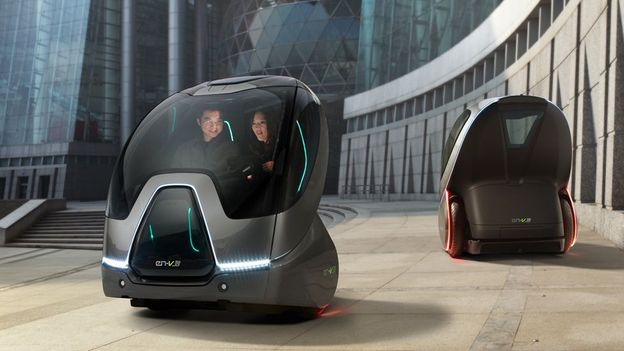Introduction:
Autonomous vehicles, once the stuff of science fiction, are rapidly becoming a reality in the modern world. With advancements in artificial intelligence, sensor technology, and connectivity, autonomous vehicles have the potential to revolutionize transportation, improve road safety, and transform the way we live and work. In this exploration of the rise of autonomous vehicles, we will delve into their evolution, current state of development, benefits, challenges, and the profound impact they are poised to have on society.

The Evolution of Autonomous Vehicles:
The concept of autonomous vehicles dates back several decades, with early experiments and prototypes dating as far back as the 1920s. However, it wasn’t until recent years that significant progress was made in the development of autonomous vehicle technology. The convergence of advancements in computing power, sensor technology, and machine learning has accelerated the pace of innovation in the field, leading to the development of increasingly sophisticated autonomous driving systems.
Current State of Development:
Today, autonomous vehicles are undergoing rigorous testing and development by leading technology companies and automakers around the world. Companies such as Waymo, Tesla, and General Motors are at the forefront of the autonomous vehicle revolution, investing billions of dollars in research and development to bring self-driving cars to market. These vehicles utilize a combination of sensors, cameras, radar, and lidar technology to perceive their surroundings, analyze data in real-time, and make informed decisions about driving maneuvers.
Benefits of Autonomous Vehicles:
The potential benefits of autonomous vehicles are vast and far-reaching. One of the primary benefits is improved road safety. Autonomous vehicles have the potential to significantly reduce the number of traffic accidents caused by human error, such as distracted driving, speeding, and impaired driving. By eliminating human error from the equation, autonomous vehicles have the potential to save thousands of lives each year and prevent countless injuries on the road.
Moreover, autonomous vehicles have the potential to improve traffic efficiency and reduce congestion on roadways. Autonomous driving systems are capable of communicating with each other and coordinating movements in real-time, leading to smoother traffic flow, reduced travel times, and fewer traffic jams. Additionally, autonomous vehicles have the potential to increase accessibility and mobility for individuals who are unable to drive due to age, disability, or other factors, enabling greater independence and freedom of movement.
Challenges and Considerations:
Despite the numerous benefits of autonomous vehicles, several challenges and considerations must be addressed before widespread adoption can occur. One of the primary challenges is ensuring the safety and reliability of autonomous driving systems. While autonomous vehicles have the potential to reduce accidents caused by human error, they are not immune to technical failures or unforeseen circumstances. Ensuring that autonomous driving systems are robust, reliable, and capable of operating safely in all conditions is critical to gaining public trust and acceptance.
Moreover, regulatory and legal challenges must be addressed to establish clear guidelines and standards for the operation of autonomous vehicles on public roads. Questions about liability, insurance, and accountability in the event of accidents or malfunctions must be addressed to provide legal clarity and protect the rights of both drivers and pedestrians.
Furthermore, ethical considerations surrounding autonomous vehicles, such as decision-making algorithms and prioritization of safety, must be carefully considered and addressed. Ensuring that autonomous vehicles prioritize the safety of passengers and pedestrians while navigating complex ethical dilemmas is essential to building public trust and acceptance.
The Profound Impact on Society:
The rise of autonomous vehicles is poised to have a profound impact on society, transforming the way we live, work, and travel. Autonomous vehicles have the potential to reshape urban landscapes, reduce the need for parking spaces, and enable new models of transportation, such as ride-sharing and mobility-as-a-service. Moreover, autonomous vehicles have the potential to revolutionize industries such as logistics, delivery, and transportation, leading to greater efficiency, lower costs, and increased convenience for businesses and consumers alike.
Conclusion:
In conclusion, the rise of autonomous vehicles represents a transformation shift in the way we think about transportation and mobility. With the potential to improve road safety, reduce congestion, and increase accessibility, autonomous vehicles have the power to revolutionise the way we live and work. However, addressing challenges such as safety, regulation, and ethics will be essential to revealing the full potential of autonomous vehicles and ensuring that they deliver on their promise of a safer, more efficient, and more sustainable future.


